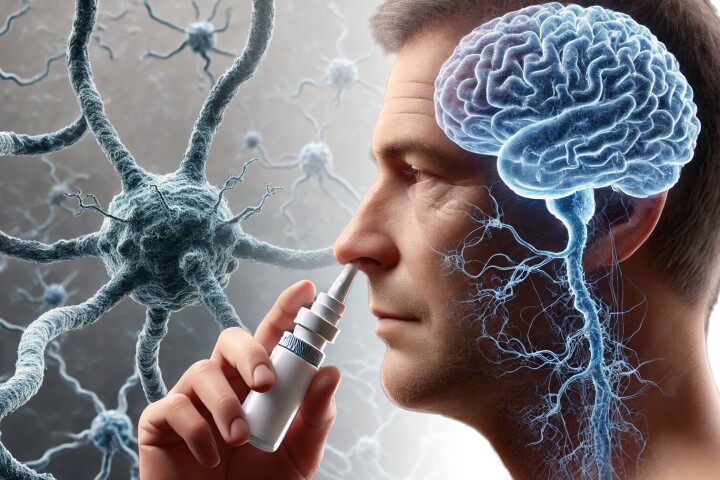The 55 poison centers around the US operate 24/7 to deliver a vital service to callers. Specially trained nurses, pharmacists, and doctors provide free and confidential help to treat and prevent poisoning emergencies. When a member of the public or medical professional calls a poison center, the information exchanged during the call – and any follow-up calls – is entered into an electronic medical record and uploaded, de-identified, to the National Poison Data System (NPDS) in near real-time.
In a new study, researchers from the University of Virginia Health (UVA Health) analyzed the data collected by US poison centers over a 15-year period between the start of 2007 and the end of 2021 to evaluate trends in medical outcomes in intentional and unintentional exposures to poisons. The findings are staggering.
Poisons are broadly defined to include medications, supplements, illicit drugs, household and industrial chemicals, environmental toxins, plants, and venomous insects and animals. ‘Intentional exposure’ to a poison includes things like suicide attempts, the use and abuse of illegal drugs, and the misuse of medications (that is, using a drug other than what it’s intended for, such as to get high). ‘Unintentional exposure’ includes unintentional misuse of non-pharmaceutical substances, medication errors, environmental and occupational exposures, bites and stings, and food poisoning. In the present study, ‘medical outcome’ was defined as the final determination made by a poison center specialist based on all available information at the conclusion of a case.
The researchers reviewed an impressive number of poison exposure calls – over 33.7 million – reported to the 55 US poison centers over the study period and grouped them according to age (adults over 19; children, 19 and younger), intentionality, and medical outcome.
They found that between 2007 and 2021, the number of calls about intentional and unintentional adult exposures resulting in death or a ‘major event,’ classified as life-threatening or resulting in significant disability or disfigurement, had increased. Intentional adult exposures resulting in death were up by 233.9%, and those resulting in a major event had risen by 133.1%. While the number of calls relating to unintentional adult exposure had declined by a very slight 0.8%, unintentional exposures resulting in a major effect and death had increased by 37.4% and 65.3%, respectively.

Data relating to pediatric exposures showed that while the number of unintentional child exposures overall had fallen by 33% over the study period, those resulting in a major event had increased by 76.6%. Overall, intentional child exposures rose by 59%, with calls resulting in a major event up by 190.1%. Intentional child exposures resulting in death increased by 122.7%.
“As a society, we should be concerned at these trends pertaining to children,” said Christopher Holstege, director of UVA’s Blue Ridge Poison Center and chief of the Division of Medical Toxicology at UVA’s School of Medicine and the study’s senior author. “We need to collaboratively strategize on better delineating the root cause for such severe cases of pediatric poisonings, especially in the realms of mental health and substance use and misuse.”
Both age groups saw more severe medical outcomes, with fewer calls about cases resulting in ‘minor effects,’ such as asymptomatic medical conditions. The researchers weren’t surprised by the results, but they do have some ideas about what might be driving this sharp rise in intentional adult and pediatric deaths.
“We were not surprised by the study findings,” Holstege said. “In fact, what prompted us to look at the data on a national level is the increased severity of cases we are seeing at UVA Blue Ridge Poison Center. The case for this trend is multifactorial: We have experienced a growing mental health crisis in the nation’s youth, and we are finding an increasing number of dangerous novel psychoactive substances such as synthetic opioids and designer benzodiazepines entering society.”
The researchers say the COVID-19 pandemic’s effect on the healthcare system throughout 2020 and 2021 may have influenced the figures. Despite the rising severity of cases, the data did not reveal a consistent increase in admissions to intensive care units over the study period. The researchers hypothesize that the decrease in poison-related ICU admissions reflects the lack of available critical care beds, insufficient staffing, and a triage system that “greatly compromised” the “care processes” of non-COVID-19 patients.

The study’s limitations are noted. First and most importantly, the study’s retrospective nature means that causation cannot be established. Second, the NPDS is subject to reporting bias, with data accuracy dependent upon the correct input and coding of medical outcomes. Third, calls to poison centers are made voluntarily, so the data does not represent all poisoning cases in the US. Fourth, the researchers included single- and multiple-substance cases of exposure, so it’s possible that commonly encountered, low-toxicity substances were involved in many cases, while less common, highly toxic substances contributed to the worse medical outcomes that were observed.
The researchers say that, given their need to handle increasingly severe, complex cases, poison center funding may need to be reconsidered.
“Poison centers are an integral part of the medical management team as we see an increase in the severity of cases of poisoning,” said Holstege. “Poison centers are staffed with clinical toxicologists who provide free expert recommendations on a vast array of toxicologic emergencies to the public and to professions who call. Involving toxicologists early can save lives and reduce the length of hospital stay.”
Americans can access the free national Poison Helpline 24/7 by calling 1-800-222-1222 or online via PoisonHelp.org.
The study was published in the journal Clinical Toxicology.
Source: UVA Health







